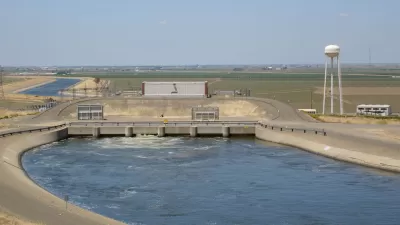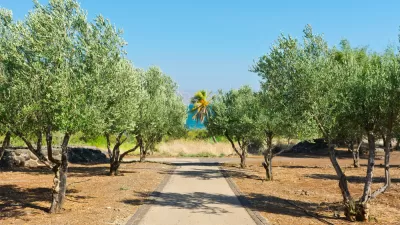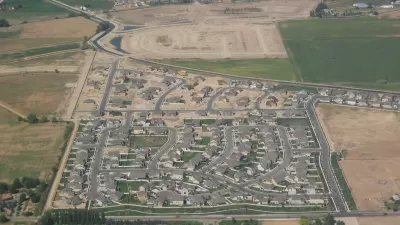A new report from the U.S. Department of Agriculture’s Economic Research Service tracks trends in the size and production of the country's farms. Even though the size of the average farm has steadily increased, "there are more small farms than ever."
As you may imagine, industrialized agribusiness along with gains in productivity and the rise of contracts have worked to steadily increase the average size of America's farms, finds the USDA's report.
Yet, writes Lydia DePillis, "[e]ven while the average size of farms is going up, there are more small farms than ever, especially in small states with farmland preservation programs like Massachusetts and Rhode Island. Community-supported agriculture, plus the local and organic food movement, are starting to show up in the numbers. It’s the mid-sized farm, between 100 and 500 acres, that’s disappearing."
"And here’s the second thing that’s wrong about our understanding of the disappearance of family farms: 96.4 percent of the crop-producing farms in the U.S. are owned by families, and they represent 87 percent of all the agricultural value generated (non-family owned farms are defined as “those operated by cooperatives, by hired managers on behalf of non-operator owners, by large corporations with diverse ownership, and by small groups of unrelated people”)," she adds. "That hasn’t changed since about 1996."
FULL STORY: Farms are gigantic now. Even the “family-owned” ones.

Alabama: Trump Terminates Settlements for Black Communities Harmed By Raw Sewage
Trump deemed the landmark civil rights agreement “illegal DEI and environmental justice policy.”

Planetizen Federal Action Tracker
A weekly monitor of how Trump’s orders and actions are impacting planners and planning in America.

The 120 Year Old Tiny Home Villages That Sheltered San Francisco’s Earthquake Refugees
More than a century ago, San Francisco mobilized to house thousands of residents displaced by the 1906 earthquake. Could their strategy offer a model for the present?

In Both Crashes and Crime, Public Transportation is Far Safer than Driving
Contrary to popular assumptions, public transportation has far lower crash and crime rates than automobile travel. For safer communities, improve and encourage transit travel.

Report: Zoning Reforms Should Complement Nashville’s Ambitious Transit Plan
Without reform, restrictive zoning codes will limit the impact of the city’s planned transit expansion and could exclude some of the residents who depend on transit the most.

Judge Orders Release of Frozen IRA, IIJA Funding
The decision is a victory for environmental groups who charged that freezing funds for critical infrastructure and disaster response programs caused “real and irreparable harm” to communities.
Urban Design for Planners 1: Software Tools
This six-course series explores essential urban design concepts using open source software and equips planners with the tools they need to participate fully in the urban design process.
Planning for Universal Design
Learn the tools for implementing Universal Design in planning regulations.
Clanton & Associates, Inc.
Jessamine County Fiscal Court
Institute for Housing and Urban Development Studies (IHS)
City of Grandview
Harvard GSD Executive Education
Toledo-Lucas County Plan Commissions
Salt Lake City
NYU Wagner Graduate School of Public Service





























